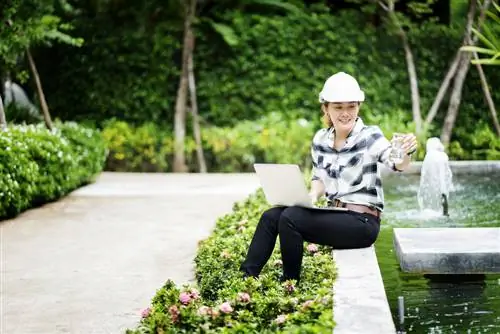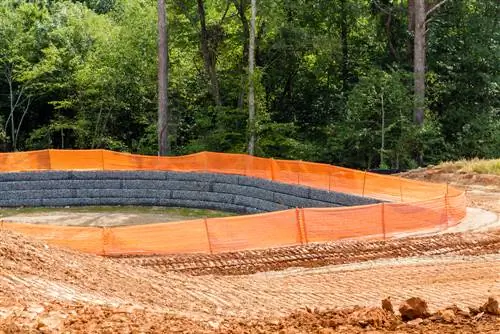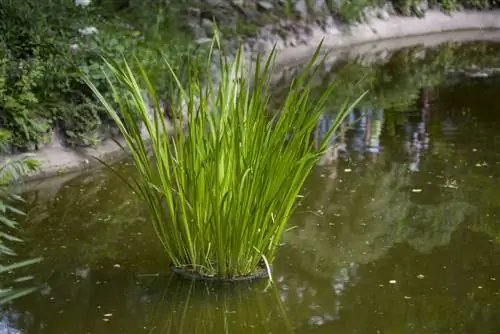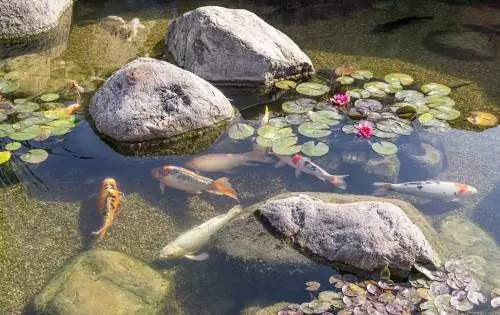- Author admin [email protected].
- Public 2023-12-16 16:46.
- Last modified 2025-01-23 11:21.
Algae in the swimming pond, with the green cloudiness of the water, signal very clearly that something is wrong with the biological balance in the natural pool. Nevertheless, the annoying floating and filamentous algae are no cause for concern as their growth can be limited using simple means.
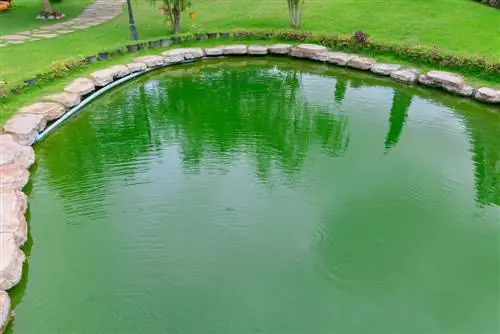
How can you fight algae in a swimming pond?
To reduce algae in the swimming pond, provide more shade, avoid gaps and cracks in the pool walls, remove nutrients through a gravel filter, plant the pond optimally and clean it regularly.
Having just completed the new installation, many natural pool owners are annoyed by algae in the swimming pond after just a few weeks. Apart from the fact that it is practically impossible to completely eliminate this green pest, the algae contamination can be greatly minimized, although this requires a little patience. You can even fight floating and filamentous algae completely without chemicals and in a completely natural way.
First: More shade for the pond
Algae form particularly heavily when there is an excess of heat and light on the pond surface on hot summer days. Natural shading with the help of reed planting helps here. Planting trees would not be recommended, as falling leaves produce additional nutrients that encourage algae to multiply. If necessary, shade sails can also be used to protect the swimming pond locally.
Second: gaps and cracks in the swimming pond pool
Young algae settle particularly lively in the small cracks within the pool wall made of stones and bricks. It is therefore better to avoid unevenness within the pool walls when building the swimming pond or to clean the corresponding areas more often later.
Third: Consistent nutrient removal from the pond water
Dividing the pool into a regeneration and bathing area, which are separated from each other by a gravel filter, has proven successful. With the help of this biological filter system, suspended particles are bound and the algae are deprived of the nutrients they need for growth.
Fourth: Optimal planting of the pond zones
Plants with a very pronounced nutrient requirement that deprive the algae of their habitat are particularly suitable for this. Calamus, cattails and pikeweed are particularly suitable and can be combined with additional floating plants.
Fifth: Regular cleaning of the natural pool
Algae in the swimming pond will spread less in a mud-free pool than in a moldy one. We recommend continuous cleaning of the pond bottom and bank areas, which powerful sponge vacuum cleaners (€119.00 on Amazon) have proven to be helpful. Depending on the size and location of the swimming pond, the entire pool should be thoroughly cleaned at least three to four times a year.
Tip
It is not uncommon for the pool water to be not entirely innocent due to the increased formation of filamentous algae in the swimming pond. In such cases, a laboratory test helps to provide precise information about the actual content of phosphates and nitrates in the pond water.


